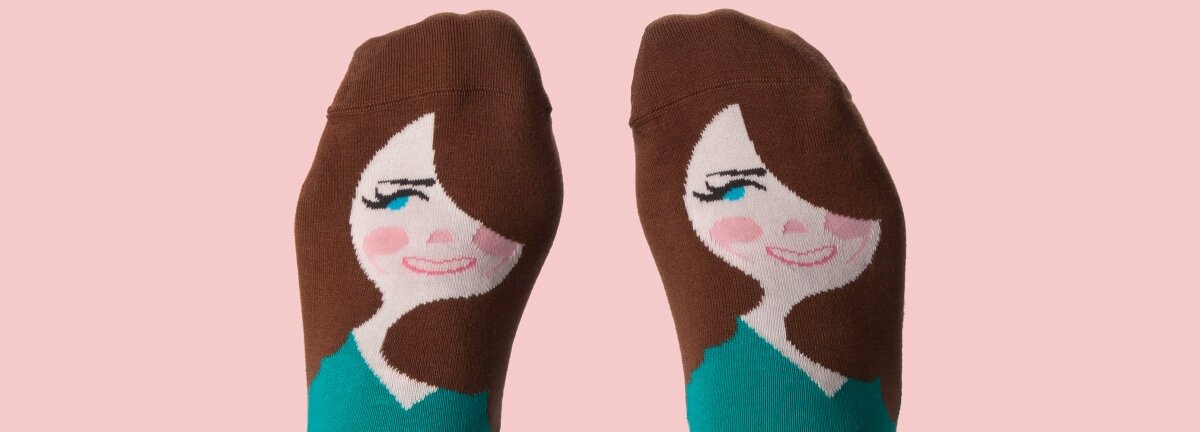Funny ideas that make for serious business – the story of ChattyFeet

As our product innovation fund, Design Council Spark, takes off for a second time, we've been out there talking to entrepreneurs to hear their stories on how they got started. Gil Kahana from ChattyFeet, the quirky purveyor of socks behind Kate Middle-Toe and Prof. Brian Sox, told us how they took a funny idea and ran with it.
Cooking up a good idea
I really enjoy cooking and one day I invited friends over for lunch. We had some great food, and Mojitos too... At one point, I lifted my feet in the air and thought that it would be cool if socks could be animated like sock puppets on your feet. It was an amusing idea but after a few days I was still thinking about it. I had a chat with Humberto (my long-time friend and now business partner) and we decided to give it a go.
People make the difference
I really believe that your best ideas come when you are with people who know you well. They're the ones who bring out the best in you. Humberto and I have that – we met while studying Communication Design at Central St Martins and we're both interested in technology, innovation, design and humorous things. So we're a good fit.
The first product I produced was a cookbook that I co-wrote with my friend Michiko Nitta. This book sold more than 30,000 copies and really made me want to create more products. I had no idea though that I would go from a book to socks! You have to be open to ideas when they come.
Prototyping 101: Socks and a marker
At first we agreed to meet weekly, and this commitment was important to help get us going. We were both working full time and had to sacrifice our personal time to grow ChattyFeet. We made a prototype by drawing a character on a pair of white socks and tested how you can animate sock with faces using your feet. We did research and came away with some revealing observations about people's relationship with fashion. For example, we wanted to know about that one garment people were proud to wear, and why. We also wanted to know how they felt when wearing it.
We discovered that certain fashion items provide more opportunity for personal expression and that even a subtle statement can make people feel happy. People are also more at ease with self-expression if they're around people they're comfortable with. This helped us to really understand the context for ChattyFeet. We liked that it was something that only revealed itself when you were relaxed – the shoes are off and the characters are out.
Bringing our characters to life
We created our first four characters and looked for a producer. Nobody wanted to work with us because the quantities we required were too small. Eventually we managed to get some samples produced and then we researched selling online. It took quite a while to come up with our name. We were very careful with this: Does it flow well? Is it easy to pronounce? It's important to consider the sound of the name without its meaning. We knew it would be a word that we'd use many times every day, so we had to love it. We came up with ChattyFeet and didn't look back.
Our first collection launched on 18 December 2012. Now we have 26 characters and are operating in 10 countries. Funny to think it all started with a good lunch!
Finding our feet in the marketplace
The key for us was to identify who would care about our products. It took us a long time to understand that people mostly love buying ChattyFeet as a gift, and that insight changed our entire strategy. There are plenty of funny socks out there, but our socks encourage people to get silly, while also being a bit of a character story. Outlining our target market made us more efficient because rather than blindly targeting everyone, we honed in on the communities that really engaged with our products. For example, illustrators have been a great supporter of what we do.
Two things we could never have done it with without
Passion and commitment. First you need to find something that gets you excited, and it has to be something you're genuinely passionate about. Passion is the fuel for your project, and without it, you’ll give up easily after the first difficult week.
Subscribe to our newsletter
Want to keep up with the latest from the Design Council?
